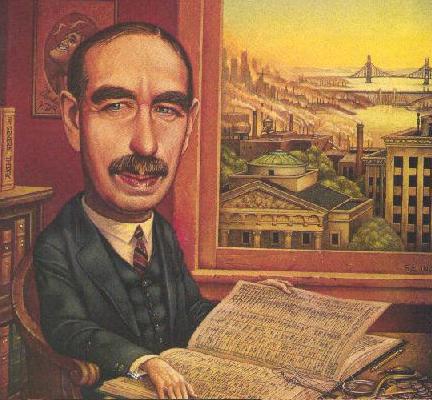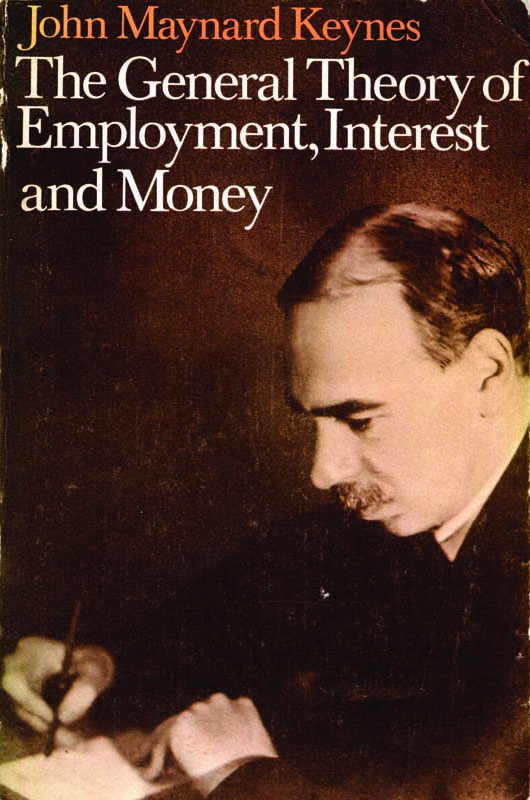


In 1936 he published the most provocative book written by any economist of his generation. The General Theory, as it is known to all economists, cut through all the Gordian Knots of pre-Keynesian discussion of the trade cycle and propounded a new approach to the determination of the level of economic activity, the problems of employment and unemployment, the causes of inflation, the strategies of budgetary policy.
Arguments about this book continued until his death in 1946 and still continue today. Despite all that has been written in the subsequent quarter of a century, Keynes and his book still represent the turning-point between the old economics and the new from which each generation of economists needs to take its inspiration and its point of departure towards fresh attempts to carry his work further.
Availability
The General Theory was printed at good quality in large numbers; inexpensive second-hand copies can easily be found.
It is out of copyright. Browsable versions are available on the History of Economic Thought website and at marxists.org. A pdf download was made by Steve Thomas for The University of Adelaide Library.
A supplement which should be read together with the General Theory is Keynes’s Reply to Viner which is included in vol XIV of the ‘Collected Writings’ and on the History of Economic Thought website.
For scholarly purposes volumes XIII, XIV and XXIX of Keynes’s ‘Collected Writings’ contain essential additional material.
Guides
- Alvin Hansen’s Guide to Keynes (1953), the standard text which introduced Keynes to a generation of students.
- Henry Hazlitt’s Failure of the “New Economics” (1959), a celebrated anti-Keynesian polemic. Overlong, overliteral, overpolitical... but readable, supported by robust common sense, and useful for the independence of its viewpoint.
- Colin Champion’s Critical Study of Keynes’s General Theory (2019), a mixture of exposition (supported by helpful diagrams) and criticism. It tries to be sympathetic but finds the logic keeps getting in the way.
- Other: there are numerous other works which provide insight into Keynes’s thought.
Contents
(Chapter titles link to pages on the History of Economic Thought website.)